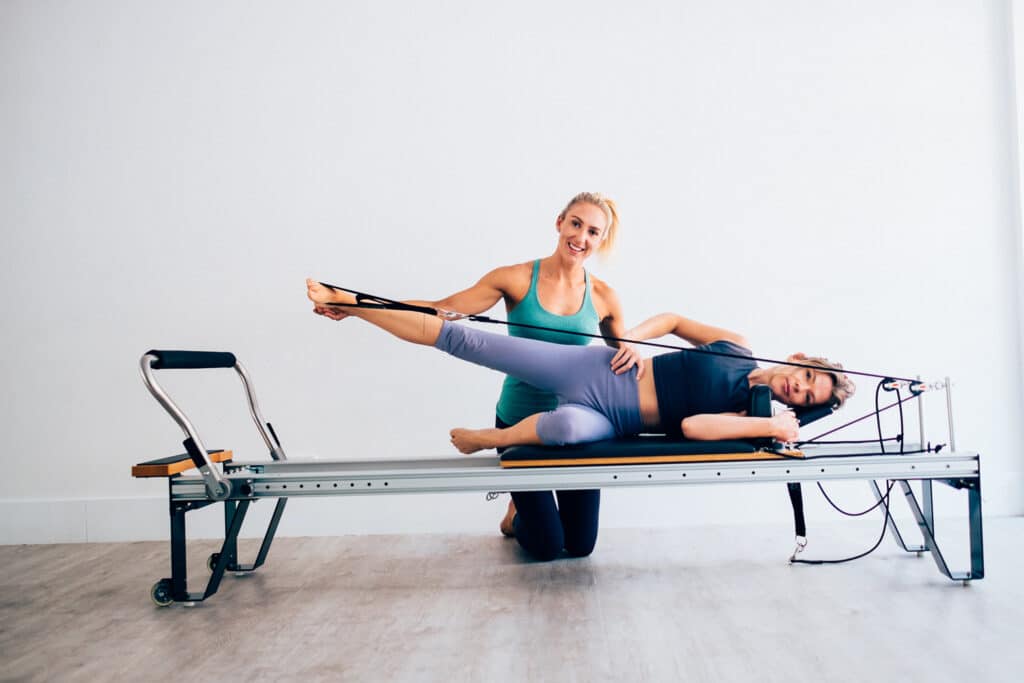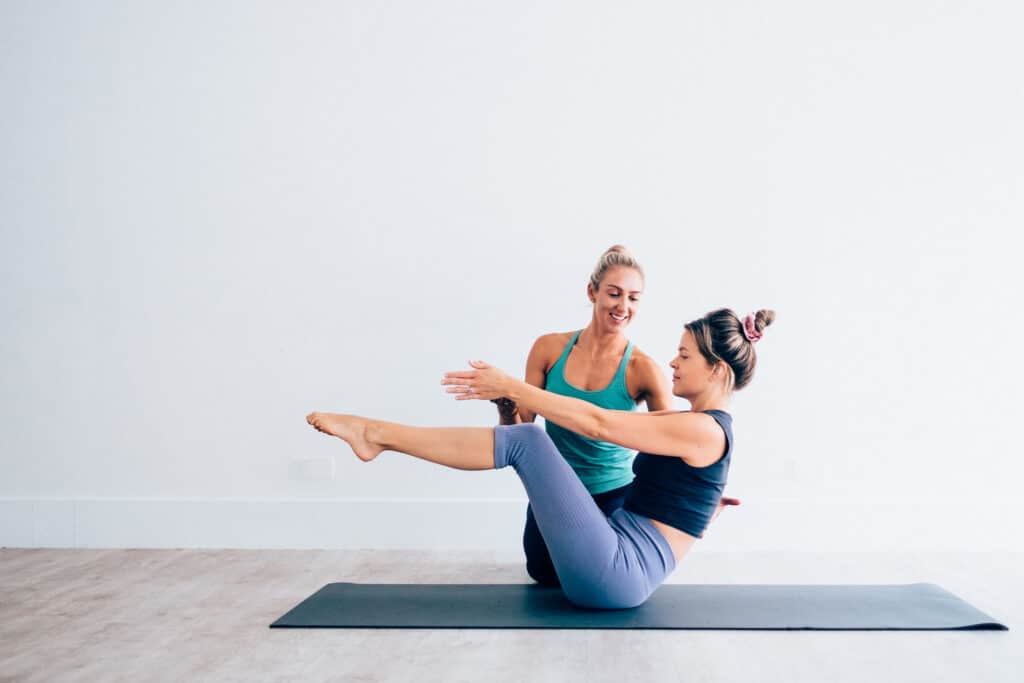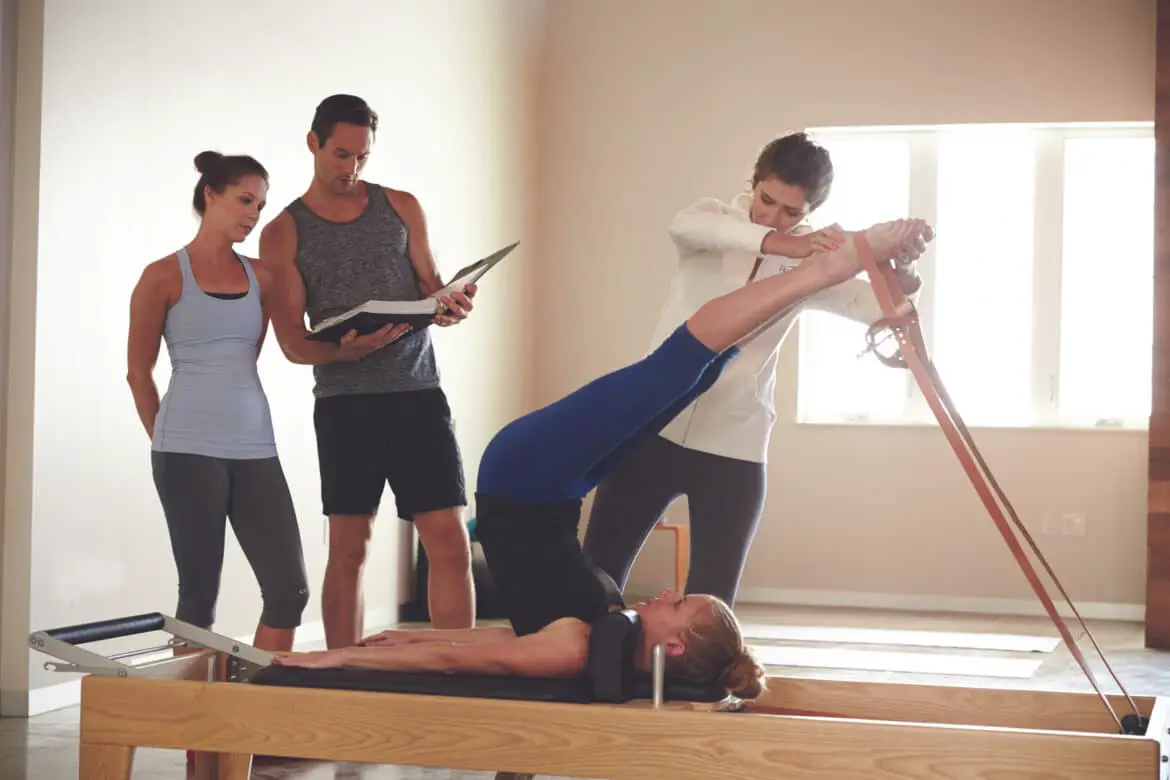Introduction
How To Get Pilates Certified: Pilates, a holistic fitness discipline that focuses on building strength, flexibility, and body awareness, has gained immense popularity over the years for its numerous physical and mental benefits. If you’re passionate about Pilates and aspire to share its transformative power with others, obtaining a Pilates certification is a crucial step towards becoming a qualified instructor. Whether you’re a fitness enthusiast looking to turn your passion into a profession or an experienced instructor seeking to expand your repertoire, this guide will walk you through the essential steps and considerations to embark on your journey to becoming Pilates certified. From choosing the right certification program to understanding the prerequisites and mastering the necessary skills, this comprehensive guide will equip you with the knowledge and insights needed to pursue a rewarding career in Pilates instruction.
So, let’s dive in and explore the path to achieving your Pilates certification and helping others on their fitness journey. Research various Pilates certification programs and organizations. Some well-known organizations include the Pilates Method Alliance (PMA), Balanced Body, and Stott Pilates.
Consider factors like program cost, location, class format (in-person or online), and the reputation of the certification provider. Most certification programs have prerequisites that include a minimum number of Pilates classes or workshops attended as a student. Some also require a background in fitness, anatomy, or a related field. Enroll in a comprehensive Pilates instructor training program. These programs typically include coursework on anatomy, exercise physiology, Pilates principles, and teaching techniques.

How long does it take to qualify as a Pilates instructor?
It can take anywhere from seven to 24 months to become a Pilates instructor, from the start of a training program to the final exam. Though, the length of your training depends on your individual circumstances.
Completion of Training Hours
Once enrolled in a certification program, you’ll need to complete the required training hours. This includes both classroom instruction and practice teaching sessions. The duration of this phase can vary but usually spans several months to a year or more, depending on the program’s structure.
Self-Study and Practice
To excel as a Pilates instructor, you must dedicate time to self-study and practice. This entails mastering the exercises, understanding their modifications, and honing your teaching skills. The more effort you put into this stage, the more confident and effective you’ll become as an instructor.
Examinations and Assessments
Most Pilates certification programs require students to pass practical and written exams to demonstrate their knowledge and teaching abilities. Preparing for and successfully passing these assessments can take several weeks or months.
Apprenticeship (Optional)
Some certification programs also include an apprenticeship phase, where you gain hands-on experience by assisting experienced instructors in a studio setting. While this isn’t always mandatory, it can be invaluable in refining your teaching skills.
Can I teach Pilates without a qualification?
To teach Pilates you are certainly encouraged to have some sort of certification- particularly if you hope to take out Public Liability or Professional Indemnity insurance for your practice.
Safety and Injury Prevention
Pilates involves precise movements and exercises that can have a significant impact on the body. Without proper training and understanding of anatomy, biomechanics, and exercise principles, there’s an increased risk of injury to both the instructor and clients. Certified instructors are trained to modify exercises and address individual needs, reducing the likelihood of accidents or injuries.
Quality of Instruction
Certification programs provide instructors with comprehensive knowledge of Pilates principles, exercise techniques, and teaching methods. This knowledge enables them to provide high-quality instruction, ensuring that clients get the most out of their Pilates sessions. Instructors with qualifications are better equipped to create effective and safe workout routines tailored to individual client goals and needs.
Professionalism and Ethics
Certified Pilates instructors adhere to a code of ethics and professional standards that prioritize the well-being of their clients. This includes respecting client confidentiality, maintaining professional boundaries, and providing a safe and inclusive environment for all clients. Certification programs often include training in these ethical considerations.
How can I become a Pilates instructor in India?
Prerequisite: Movement Principles, Mat 1 and Reformer 1 or equivalent, 20 Pilates studio sessions. 1 year work experience in related field recommended. Comprehensive Pilates Instructors Training (CPIT) is one of our starred Teacher’s training course.
Research and Choose a Certification Program
Selecting the right Pilates certification program is a critical step. Look for programs that are recognized and accredited by reputable organizations in the fitness industry. Some internationally recognized certification bodies include the Pilates Method Alliance (PMA), Balanced Body, and Stott Pilates. Research and choose a program that aligns with your goals and interests.
Enroll in a Certification Program
Once you’ve chosen a certification program, enroll in it. These programs typically offer various levels of certification, so consider starting with a beginner-level course if you are new to Pilates. The duration and structure of the program may vary, but it often includes a combination of in-person or online classes, self-study, practical training, and assessments.
Complete the Required Hours
Most certification programs require a minimum number of training hours to qualify for the certification exam. Be prepared to spend several weeks to several months completing these hours, which may include classroom instruction, practice teaching sessions, and self-practice.
Is Pilates high in demand?
Pilates is popular in the U.S. and Canada. These countries are interested in new cultures and trends. People in the U.S. and Canada are drawn to physical activities and incorporate them into their daily lives, generating demand development. Sales of pilates equipment are growing in Europe as people become more active.
Diverse Clientele:
Pilates attracts a diverse clientele, ranging from athletes and fitness enthusiasts to individuals seeking rehabilitation or relief from musculoskeletal issues. This broad appeal contributes to its sustained demand as it can cater to a wide range of fitness levels and needs.
Holistic Wellness Approach
Pilates is not just a physical workout but also emphasizes mental and emotional well-being. It promotes mindfulness, stress reduction, and relaxation, which align with the increasing interest in holistic wellness practices.
Corporate Wellness Programs
Many companies are now incorporating wellness programs for their employees to improve overall health and productivity. Pilates classes are often a part of these initiatives, further boosting demand.
Specialized Pilates Studios
Pilates studios that offer specialized classes, such as reformer Pilates, mat Pilates, or Pilates for specific populations (e.g., prenatal or postnatal Pilates), have gained popularity. These studios cater to individuals with specific fitness goals and preferences, contributing to the demand.
Why is Pilates so expensive?
The Pilates instructors have spent considerable amount of time, effort and money in order to get themselves trained as instructors. This also means that Pilates instructors have a strong foundation in anatomy and movements as compared to many other fitness instructors.
Small Class Sizes: To ensure that clients receive individualized attention and proper instruction, Pilates studios typically keep class sizes small. This means there are fewer participants per class compared to larger group fitness classes like yoga or aerobics. Smaller class sizes reduce the instructor-to-student ratio, which can lead to higher prices to cover the cost of paying qualified instructors.
Certified Instructors: Qualified Pilates instructors undergo extensive training and certification programs, which can be expensive and time-consuming. Studios need to compensate these skilled professionals adequately, and this contributes to the overall cost of Pilates sessions.
Studio Overheads: Pilates studios often have higher overhead costs compared to other fitness facilities. These costs include rent or mortgage payments for studio space, utilities, insurance, and equipment maintenance. These expenses are factored into the prices clients pay for their sessions.
Personalized Instruction: Pilates is known for its focus on precision and proper form. Instructors provide personalized guidance to clients, offering corrections and modifications as needed. This level of individual attention is a hallmark of Pilates but also contributes to the higher cost, as instructors need to tailor each session to the specific needs of the clients.
Is Pilates course hard?
Remember, the course is a lot more intense than you might be expecting. It’s not just about learning how to teach but also about understanding the philosophy behind Pilates and setting up your own business—and these can be pretty heavy.
Prior Fitness Experience
Your prior fitness background can significantly impact your experience with a Pilates course. If you already have a strong foundation in fitness, including core strength, flexibility, and body awareness, you may find certain aspects of Pilates easier to grasp. Conversely, if you are new to exercise or have limited experience with fitness, you may initially find Pilates challenging.
Program Level
Pilates courses are often designed to accommodate participants of varying fitness levels, from beginners to advanced practitioners. The level of difficulty can be adjusted based on the program you choose. A beginner’s course will typically introduce fundamental Pilates principles and exercises, making it more accessible. On the other hand, advanced courses may incorporate complex movements and advanced equipment, increasing the level of difficulty.
Instructor’s Teaching Style
The effectiveness of a Pilates course also depends on the instructor’s teaching style and their ability to explain and demonstrate exercises. A skilled and patient instructor can make the course feel less challenging by providing clear instructions and modifications for different fitness levels.
Is it hard to start Pilates?
Any Pilates class can be intimidating if you’re new and unfamiliar with the different exercises. It’s best to start off in a setting where you can get as much instruction as possible, whether it be one-on-one or in a small class taught by a certified Pilates instructor.
Prior Fitness Experience
Your previous experience with fitness or exercise can significantly impact how challenging you find Pilates. If you have a background in activities like yoga, dance, or strength training, you may find certain aspects of Pilates more accessible due to your existing body awareness and physical conditioning. However, even if you are a complete beginner, Pilates is designed to be adaptable for all fitness levels.
Mind-Body Connection
Pilates emphasizes the mind-body connection, focusing on proper alignment, breathing, and body awareness. Developing this connection can take time, and some people may initially find it challenging. However, with practice and guidance from a qualified instructor, you can improve your mind-body awareness.
Patience and Persistence
Starting any new exercise program requires patience and persistence. It takes time for your body to adapt to new movements and for you to become proficient in Pilates techniques. The key is to stay committed, attend regular classes, and be patient with yourself as you progress.
Is it hard to do Pilates?
Pilates doesn’t get easier. But you will get better at it. One of the confusing aspects of the Pilates method is that it becomes more challenging with experience. Do not be surprised if there are exercises that are done during your first few classes that you do not connect with at all.
Core Strength
Pilates places a strong emphasis on strengthening the core muscles, including the deep abdominal muscles and the muscles of the back and pelvis. If your core is weak or underdeveloped, you may initially struggle with certain Pilates exercises that target these areas. Consistent practice can help build core strength and make these exercises more accessible.
Flexibility
Pilates also emphasizes flexibility, and some exercises involve stretching and lengthening the muscles. If you have limited flexibility or muscle tightness, you may find certain stretches and positions challenging. Regular Pilates practice can help improve your flexibility over time.
Instructor and Guidance
The guidance of a knowledgeable Pilates instructor can significantly affect your experience. A skilled instructor will provide clear instructions, demonstrations, and modifications to suit your individual needs and abilities. They can help you overcome initial challenges and ensure that you are performing exercises safely and effectively.
Adaptations and Modifications
Pilates exercises can be adapted and modified to accommodate different fitness levels and physical conditions. If you have specific limitations, injuries, or physical restrictions, your instructor can tailor the exercises to meet your needs. This adaptability makes Pilates accessible to a wide range of individuals.

Conclusion
Achieving Pilates certification is a transformative journey that allows individuals to turn their passion for Pilates into a rewarding and fulfilling career. It’s a process that requires dedication, commitment, and a strong desire to deepen one’s understanding of this holistic fitness discipline. By selecting the right certification program, meeting prerequisites, gaining practical experience, and successfully passing exams, individuals can become qualified Pilates instructors with the knowledge and skills needed to guide others on their path to health and wellness.
Remember that the journey doesn’t end with certification; it’s an ongoing commitment to continuous learning and improvement. Pilates instructors must stay up-to-date with evolving techniques and maintain their certification through continuing education. Whether you aspire to work in a studio, fitness center, or even start your own Pilates business, the certification process equips you with the tools to share the many benefits of Pilates with clients of all backgrounds and abilities.
As you embark on this exciting journey, always keep in mind the immense satisfaction that comes from helping others improve their physical and mental well-being through Pilates. Your passion and dedication as a certified instructor can make a meaningful impact on the lives of your clients, and the rewarding feeling of witnessing their progress is one of the most fulfilling aspects of a career in Pilates instruction. So, embrace the path to Pilates certification, and let your love for this practice inspire and empower both yourself and those you teach.

